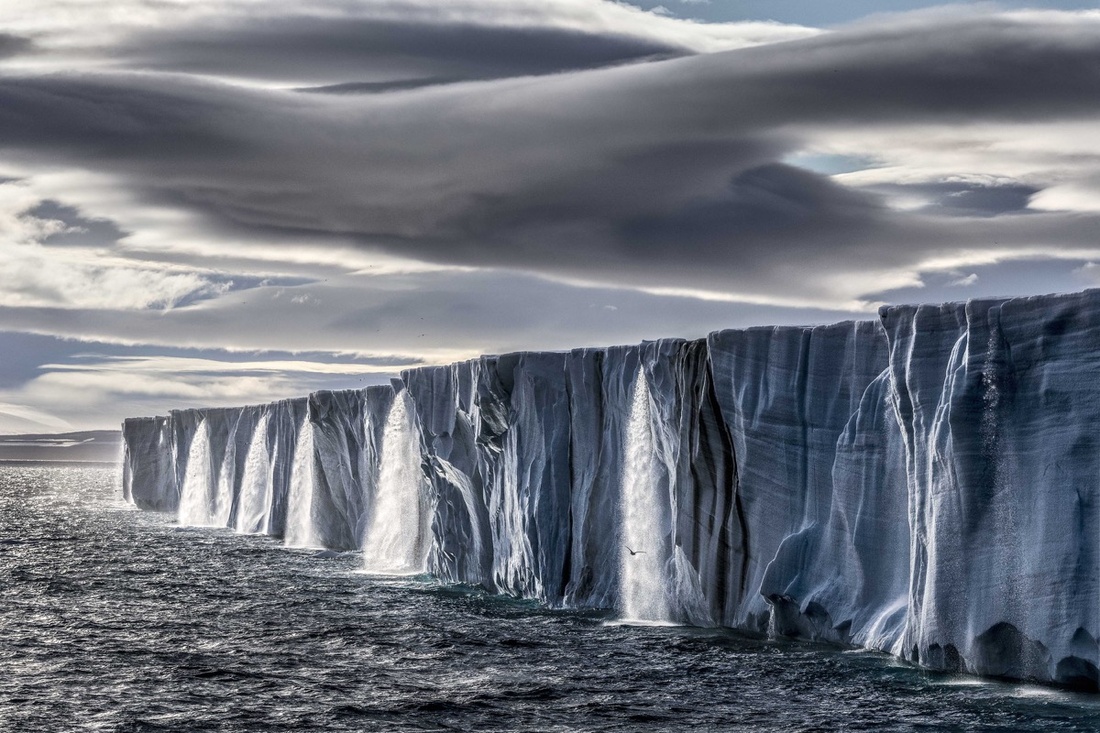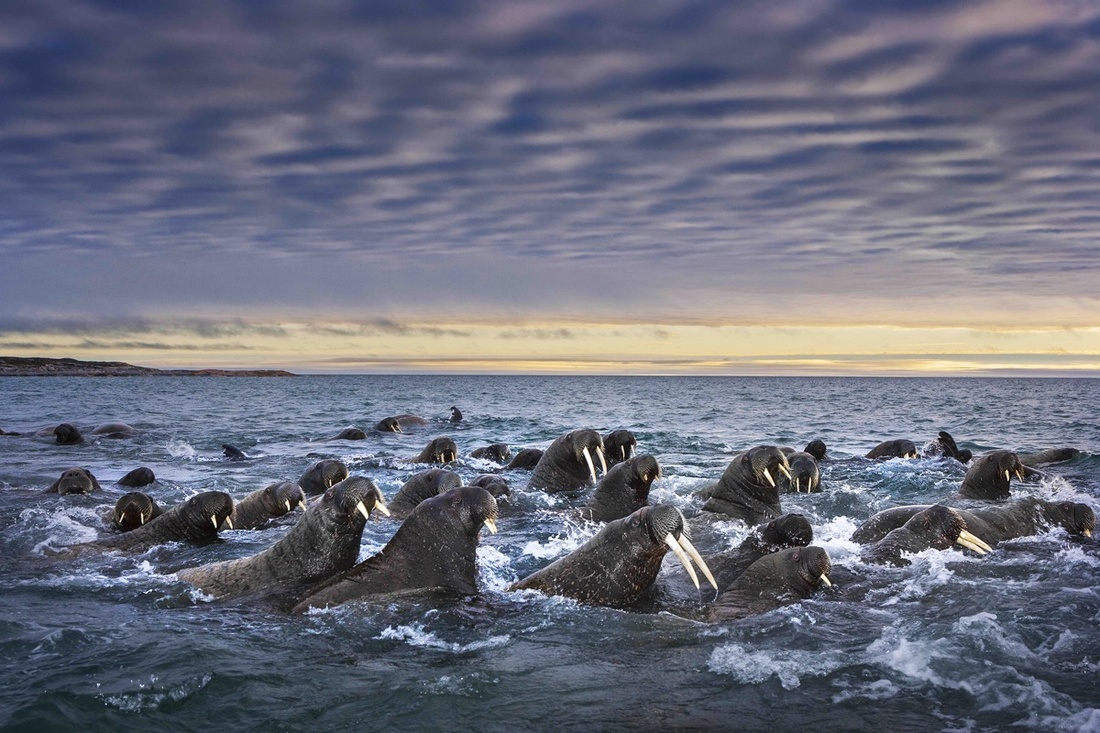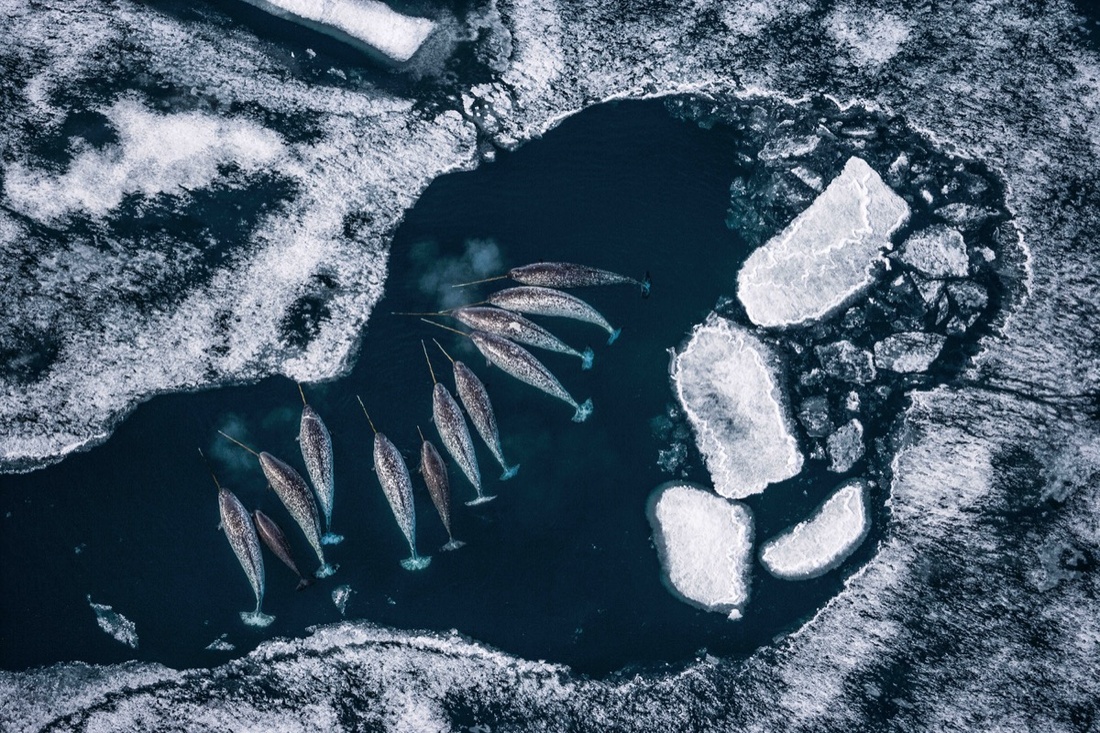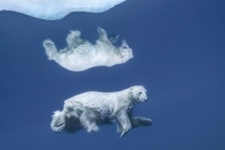National Geographic Photographer Opens SoHo Gallery to Inspire Next Generation of Eco-Warriors
 Paul Nicklen, Ice Waterfall. Courtesy of Paul Nicklen Gallery.
Paul Nicklen, Ice Waterfall. Courtesy of Paul Nicklen Gallery.
When a storm struck during a 2015 expedition to Norway, photographer Paul Nicklen and his companions holed up in their boat to escape the hurricane-force winds. As the sun began to set, however, he emerged from the hold. “It was the most beautiful moment,” Nicklen says, recalling how the fading light illuminated a string of waterfalls thundering down the side of the Nordaustlandet ice cap.
The scene may have been breathtaking—but for Nicklen it was yet another reminder of our rapidly warming planet. Unprecedented 60-degree temperatures in Svalbard (located just over 500 miles from the North Pole) had melted huge sections of ice, sending fresh water streaming into the ocean. The sheer volume of runoff was changing the salinity of the ocean, with disastrous results for the wildlife.
And the disappearing ice could also be deadly; earlier that day, Nicklen’s group had gone searching for “big fat beautiful polar bears.” Instead, they found a pack starved to death—even its two three-year-old cubs.
 Paul Nicklen, The Long Summer. Courtesy of Paul Nicklen Gallery.
Paul Nicklen, The Long Summer. Courtesy of Paul Nicklen Gallery.
As an assignment photographer for National Geographic, Nicklen travels to the far reaches of the planet to capture anything from polar ecosystems to salmon farming. It’s during these trips that he has come face to face with the undeniable effects of climate change—a perspective he will share with New Yorkers at his new SoHo gallery when it opens its doors this Saturday.
Nicklen himself was raised far from the big city, in a 200-person Inuit community on Baffin Island in southern Canada. As a child, he had no radio and no television, instead spending his time outside playing in the snow and ice. In college, he majored in biology and went on to study species such as polar bears and Canadian lynxes.
But he eventually abandoned a career in hard science. “I just loved the animals, and it drove me nuts that I was turning the beauty of nature into data sheets,” Nicklen explains. “I thought, I want to photograph these species.” So he did—first as a successful “pretty picture photographer,” then as a photojournalist whose images told stories in the pages of National Geographic.
 Paul Nicklen, Penguin Split. Courtesy of Paul Nicklen Gallery.
Paul Nicklen, Penguin Split. Courtesy of Paul Nicklen Gallery. Paul Nicklen, Tusked Titans. Courtesy of Paul Nicklen Gallery.
Paul Nicklen, Tusked Titans. Courtesy of Paul Nicklen Gallery.
Then he met Cristina Mittermeier, founder of the International League of Conservation Photographers. She had rounded up a group of high-profile nature and wildlife photographers—“one-man bands,” as Nicklen describes them—and encouraged them to consider the ways in which their work might further the fight to protect the planet.
“She said to all of us, ‘You guys are conservation photographers,’’’ Nicklen recalls. “We kind of laughed at her, like, what’s a conservation photographer? We didn’t even know what it was.” Mittermeier, a photographer herself, had actually coined the title—“When you looked up the term 15 years ago, it was how to preserve archival images in a museum,” Nicklen notes.
Together, Nicklen and Mittermeier went on to found SeaLegacy, a nonprofit collective of photographers and filmmakers that aims to inspire conservation of the world’s oceans. Paul Nicklen Gallery will donate 10 percent of all profits to SeaLegacy—more, Nicklen says, for the inaugural show of his photographs.
 Paul Nicklen, Gathering of Unicorns. Courtesy of Paul Nicklen Gallery.
Paul Nicklen, Gathering of Unicorns. Courtesy of Paul Nicklen Gallery.


Each work will be accompanied by a background text (“much like my Instagram,” Nicklen says) that explains the environmental issues at play. There will also be videos on view in the gallery outlining SeaLegacy’s mission. At some point, he hopes to incorporate virtual reality to make visitors’ experiences with these ecosystems that much more immersive. The gallery attendants, he notes, are there as much to inform as to sell.
“Instead of just talking snake oil about the art, we want them to talk about the message,” Nicklen says. “We want people to leave here educated, we want people to leave here caring.”
Although Nicklen’s work will be the first on display, he’s excited to open the space up to fellow photographers for later shows. And while each exhibition will deal with environmental concerns in some way, they won’t be limited to global warming. Nicklen mentions the ivory trade industry and shark-finning as potential themes. “I want to put up some stuff by people who are really going to scare the shit out of all of us,” he says, “I don’t want this to be a pretty picture gallery.”
But Nicklen does understand the power of a beautiful image to galvanize people to act. “It’s like turning on the television on Saturday morning and seeing Alex Trebek with all these starving kids in Africa. It’s too much. You haven’t even woken up yet, you got your coffee, you get beaten over the head with something, you change channels. So you have to lure people in,” he says.
 Paul Nicklen, Face to Face. Courtesy of Paul Nicklen Gallery.
Paul Nicklen, Face to Face. Courtesy of Paul Nicklen Gallery.
His photograph of Nordaustlandet’s waterfalls is a prime example of this approach. “You see climate change in effect right there,” he says. “It’s beautiful but it’s gut-wrenching.” This combination has attracted numerous buyers, as well as the media—it was the lead image in a National Geographic issue dedicated to climate change, as well as the cover of Nature Conservancy magazine.
Al Gore also uses the image in his lectures on climate change. “It’s an image that really allows you to have a microphone and discuss the biggest issue of our time,” Nicklen says.
Appropriately, the gallery opens its doors on Earth Day. Although some 24,000 people are expected to attend New York’s March for Science that day, Nicklen emphasizes the gallery’s potential to inform and push people to act every day of the year.
“Once I take a great image, it’s time for that picture to go to work,” he explains. “The gallery is another place that, while I’m sleeping or while I’m on my next assignment, these images are still working. They’re still telling stories while I’m already on to the next project.”
—Abigail Cain

No comments:
Post a Comment